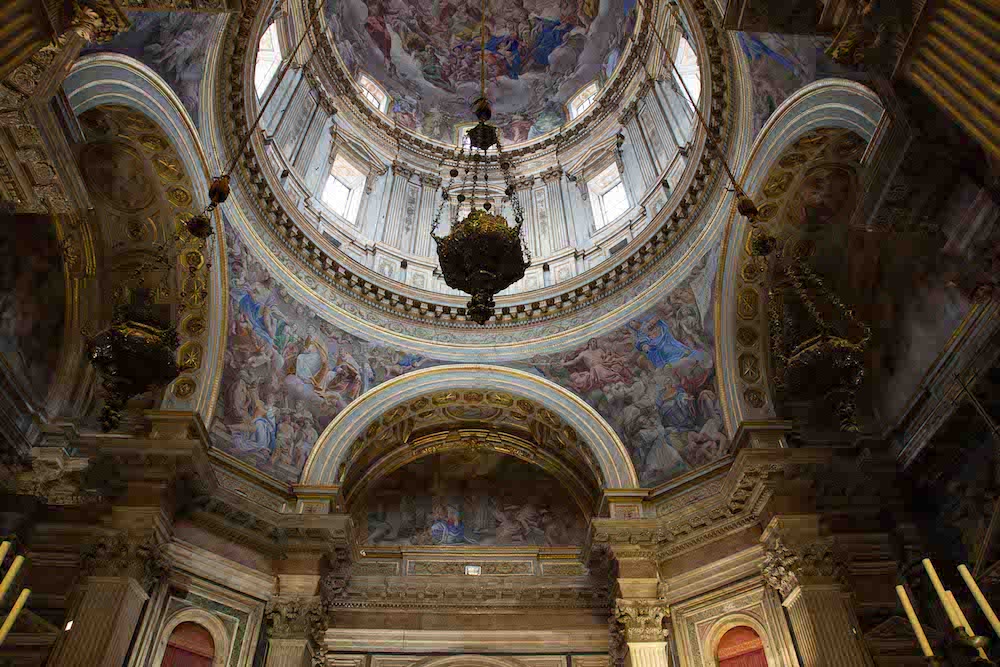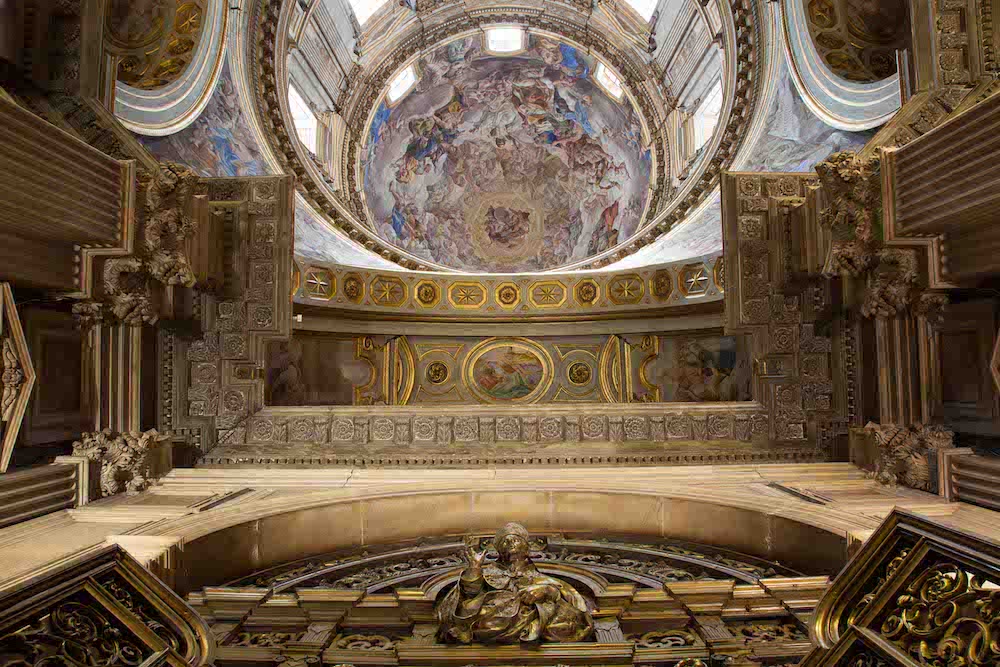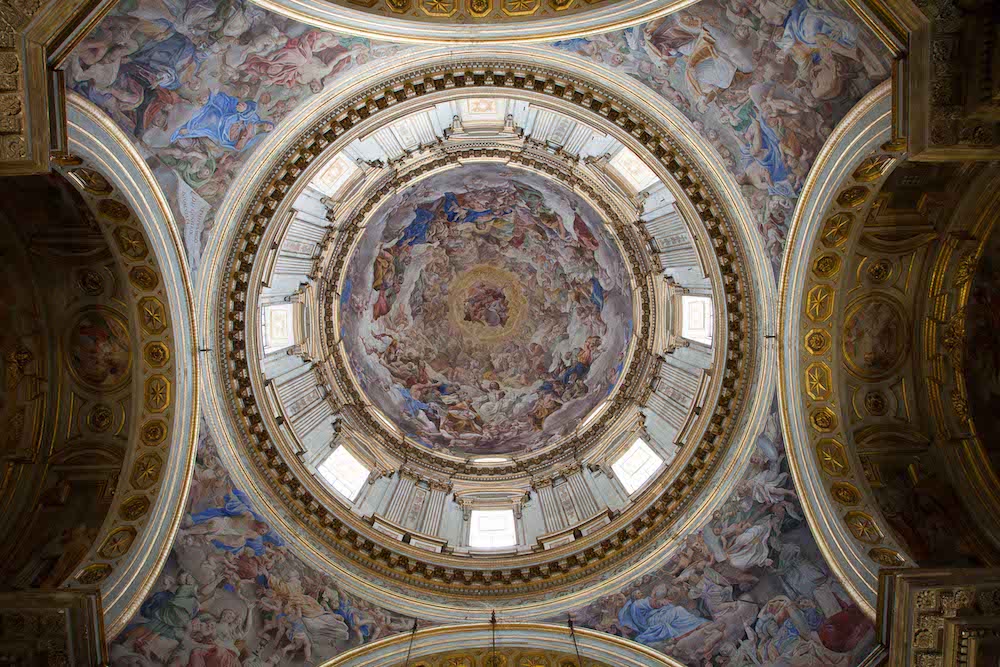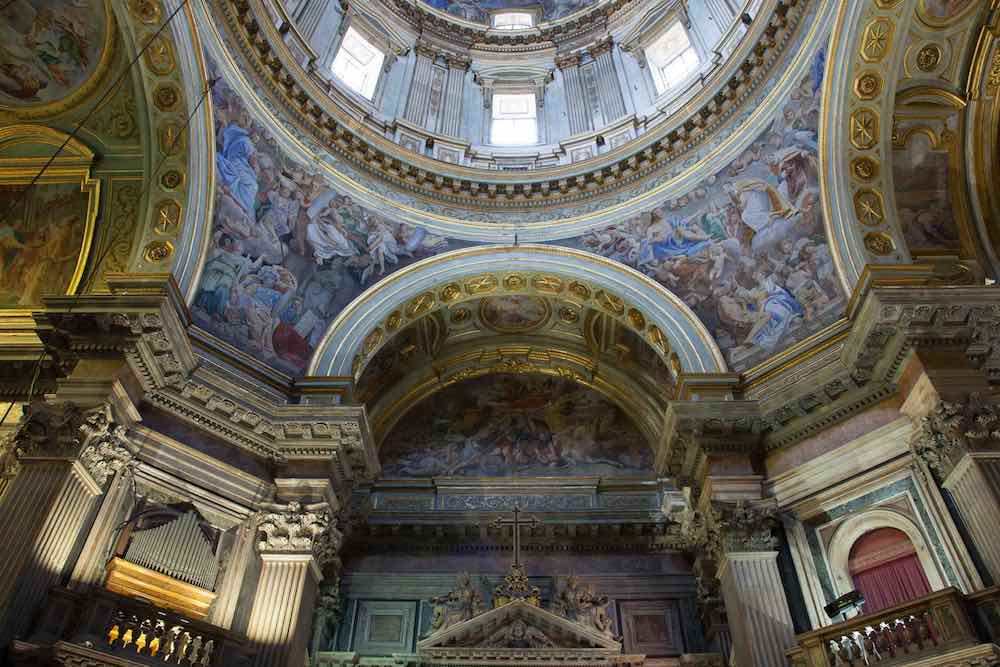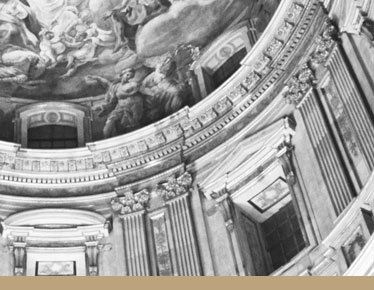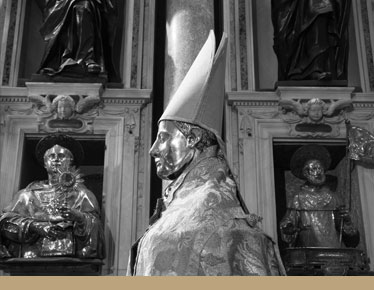The Chapel of St. Januarius sums up the deep pact between the people of Naples and the young Christian martyr. The Deputation took on the responsibility of fulfilling the pledge made to St. Januarius and it was a scrupulous, demanding client, commissioning the design of the chapel from Francesco Grimaldi, a famous architect in the late 6th and early 7th centuries. The project followed the most modern canons and criteria, above all as regards the dome which, like those of the cathedral of Florence and the basilica of San Pietro, is a double-shell dome.

The Chapel
The interior
An internationally-acclaimed gem of Baroque art and architecture, a unified area of beauty containing the most important expressions of 16th and 17th-century art.
The participation of the populace in this gigantic project was great. As can be imagined however, the decision to invite painters from other towns was not approved of by the Neapolitan painters. They were offended by being excluded from such a symbolically important area for the capital of the kingdom, and they even resorted to violence. In 1630 the Deputation contacted Domenico Zampieri, nicknamed “Domenichino”, a friend of Guido Reni and a pupil of the famous school of Annibale Carracci, considered the father of the Italian Baroque school of painting. The contract with Domenichino, was finally drawn up the following year in 1631.
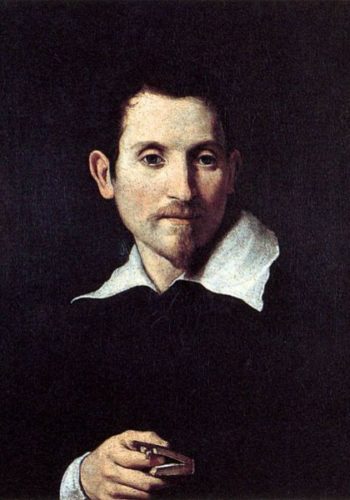
This document is kept in the archives of the Deputation and testifies to the reason why the painter made almost all the oil and fresco works in the Chapel. But Domenichino too received so many threats and intimidations that he decided to flee Naples and he came back only on the insistence of his friends and because his wife and daughter had been taken hostage by the Neapolitans.
Thus he completed his work; he frescoed the lunettes of the altars, the under-arches, the pendentives at the base of the dome. He also completed five of the six paintings on copper which decorate the side altars. Domenichino’s painting aroused the unanimous approval and enthusiasm of the Deputation and the town, but on 6 April 1641 he died suddenly, perhaps from poisoning. Giovanni Lanfranco completed the dome in which he showed paradise, and Jusepe de Ribera, nicknamed Spagnoletto, “little Spaniard”, was commissioned to paint St. Januarius coming out of the furnace unharmed, the sixth oil painting on copper.
The Chapel: more information
The altar and the tabernacle
Masterpieces of Neapolitan Baroque where the most precious treasure is kept


